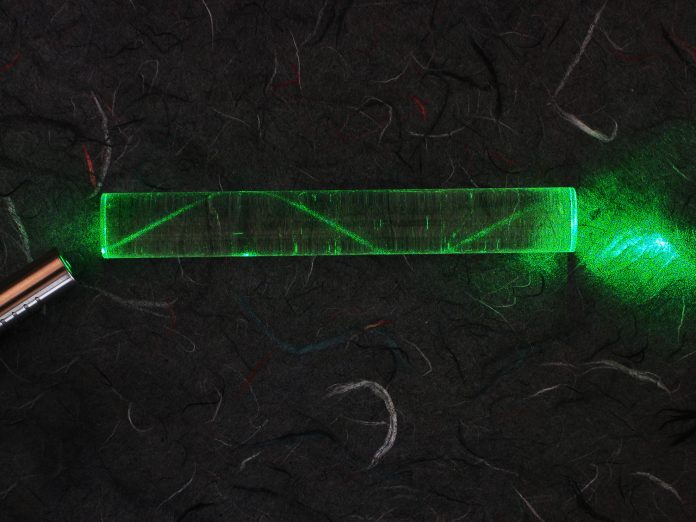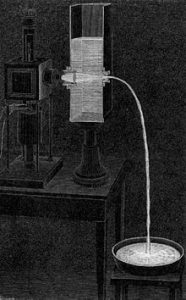Fiber optics technology is the advance signaling sensation used for communication and framing the object for illumination. Getting into depth of its basic helps you not only to know it better but also to use it better.
Starting with the question that you ask firstly when listening to the name-Fiber optics:
What is fiber optics
Fiber optics is a technology that uses light to transmit data or electrical signal through optical fiber.
So what is Optical fiber?
Technically we define optical fiber as a transparent transmitting medium which guide the electrical signal in the form of light from source to destination.
Now to understand in simple terms, it’s a flexible light pipe made up of glassy material like silica or plastic that passes light between two ends of fiber.
When and where it was invented?
The story of fiber optics is started from the demonstration of light guiding principle by Daniel Colladon and Jacques Babinet at Paris in 1840’s. After this the introduction to phenomenon of total internal reflection by John Tyndall in 1870’s had set the stage for this technology. Then the fiber optics is followed by several experiments and advancement until Robert Maurer of Corning glass made it commercially available in 1970’s. Since then, use of this technology increases dramatically and its ease of installation and lower production cost make it popular now days.
How optical fiber is made and communicates through light?
Optical fiber is made up of glass or plastic material. Glass is usually a form of silica or crystalline material like sapphire. The construction of optical fiber is consisting of several layers. These are:
- Central core that carries the light signal.
- Cladding, that helps to keep light in the core.
- Outer coating to protect the cladding layer.
- Strengthening layer to bound the lower layer strongly.
- Lastly, an outer jacket to protect the fiber from environmental conditions.
Fiber optics communicate through light and its lightning application uses illuminator to perform this. The illuminator is a bright light source that focuses the light into the fiber. The light may be passing inside the fiber to create spotlight or end-glow effect or it may be emitted along the length of the fiber to create a neon or side glow effect over the surface of the fiber. These characteristics make them suitable for pool lightening and other display application.
Types of fiber optics
Technically there are two type of fiber optics; one which has small core diameter known as single mode fiber and the other with large core diameter known as multimode fiber. Single mode fiber allows light to travel in straight line and has ability to take light without altering about 80Km. On the other hand multimode fiber has larger path for light that allows light to travel thorough several modes.
For lightening purpose the type of fibers incorporated are:
End-emitting fiber- Such type of fiber has large core that traps the light and consist of transparent light resistive cladding. This couples the light efficiently and glows at the end points.
Edge-emitting fiber- These fiber has rough cladding and core surface that permits light to scatter from its surface. These fibers are carefully design to give smooth and even glow of light just like neon or fluorescent tube.
Type of sources for optical fiber
Illuminator is an electronic device which is used as source of light for optical fiber. It contains light sources, filters, amplifier and other optical devices to bright up desired pattern. Illuminator must be efficient in power coupling and contains advanced light sources such as:
Quartz halogen lamps- These sources develop as spotlight projector and work at low AC voltage with wide output power range.
Xenon metal halide lamp- These sources offer high output power with extra bright illumination. But these also require high voltage for greater efficiency.
LED’s- These are use in the system which require higher efficiency but less power.
Terminology used in fiber optics
Refractive index- It’s a way of measuring the speed of light in optical fiber. Larger the refractive index, smaller is the speed of light.
Numerical aperture- It measures the light gathering ability of fiber. It determines the maximum light to be accepted and propagated along the fiber.
Acceptance angle- It’s an half angle of the cone created by light inside the optical fiber due to total internal reflection inside the fiber core.
Attenuation- This is related to the decrease in signal strength along a fiber optic cable cause by absorption and scattering. It must be low for greater efficiency.
Power coupling: It determines the efficient use of power delivered from the source by the optical fiber. Fiber with larger diameter has low coupling losses.
Benefits of fiber optics
Safety– No danger of electric shock, heat or ultraviolet emission which make it ideal for pool lightening, art lighting and framing around other water surface.
Versatility– Multiple operations are possible for many applications through advanced fiber optics illumination technology.
Economical- Cost of installation, operation and maintenance is much lower than any other available alternate.
User friendly– The fiber optics technology is easy to understand, use and utilize.
The cable use by fiber optics is flexible enough to install in any design or shape, and also it is light weight than other cables. Optical fiber cable offer low losses and higher reliability. It is much secure and has long life span.
Interesting fact about fiber optics
- Fiber optics is slightly thicker than human hair.
- It’s the fastest means of transmitting signal than any other forms of communication.
- Thousands of optical fiber is bundled into compact cable, which make it easy to install.
- It is the much secure means for underground and underwater cable application.
- They can be implemented for museum display, pool lightening, star field ceilings and many more.
Several new kinds and type of fiber optics are emerging and developing under the scientific research. Recently developed zinc-selanide core of fiber optics for effective manipulation of light sources is one of the examples. This technology is spreading at faster rate around the globe making it available for every possible application. This fiber optics advancement is surely helpful for creating the more ‘Green’ future of the earth in field of communication and lightening.


